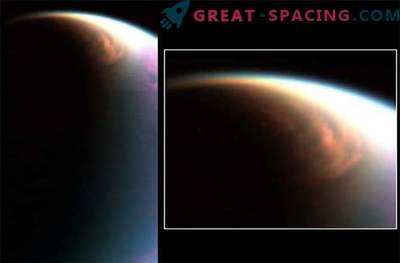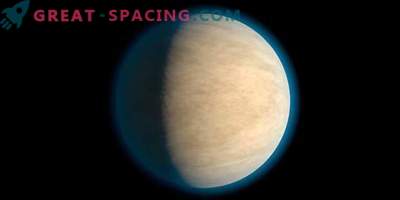
Climate models of Jupiter may resemble those of the Earth. Because of this, the gas giant is becoming an excellent laboratory for studying the planetary atmosphere.
Acceleration of the atmosphere over the equatorial line of Jupiter - a jet stream moving from east to west and changing its course exactly on schedule. NASA scientists decided to find out what type of waves causes the jet to change direction.
Similar equatorial jet streams were fixed on Saturn and the Earth, where in 2016 there was a rare violation of the usual wind model. The new analysis combines modeling of the atmosphere of Jupiter and 5-year observations from the IRTF IR telescope (Hawaii). The obtained information will help to understand the dynamic atmosphere of Jupiter and the planets outside our system.
Jupiter is located far from Earth from the Sun, larger, rotates faster and differs in composition. But it can be used to understand the equatorial phenomenon. The equatorial jet stream of the Earth was noticed in 1883, when observers recorded fragments from the eruption of the volcano Krakatau. Later, meteorological balloons caught the east wind in the stratosphere. As a result, the researchers found that these winds regularly change course. A variable pattern starts in the lower level of the stratosphere and spreads to the line with the troposphere. In the eastern phase, the process is associated with warmer temperatures, and the western one is cooler. The situation was called the quasi-two-year oscillation of the Earth (QBO), where one cycle lasts 28 months. The QBO phase affects the transport of ozone, water vapor, pollution in the upper atmospheric layers and the creation of hurricanes.
When reviewing the upper atmosphere of Jupiter in IR light, one can notice a portion above equatorial heating and cooling during a 4-year cycle. They duplicate the Jupiter climate pattern ( QQO) and are compared with the terrestrial QBO. The terrestrial cycle can affect the transport of aerosols and ozone, as well as the formation of hurricanes
The cycle of Jupiter is called the quasi-two-year oscillation (QQO), and it takes 4 years. Saturn also has its version of the phenomenon with a duration of 15 years. Scientists have a common understanding of patterns, but they are still trying to figure out how different types of atmospheric waves contribute to oscillation. Jupiter's previous studies looked for QQO through temperature measurements in the stratosphere to calculate wind speed and directionality. The new set covers one full cycle and focuses on a much larger area (from 40 degrees north to 40 degrees south). To achieve a high resolution used TEXES. This helped to study the thin vertical sections of the atmosphere of the gas giant.
The team noticed that the equatorial jet is being pulled high into the stratosphere. The changes covered a large region, so scientists were able to separate several types of atmospheric waves that do not affect QQO. As a result, gravitational waves made the main mechanism. The new set corresponded and created by the simulation.
This study allowed us to better understand the physical mechanisms linking the lower and upper atmospheres, not only in Jupiter, but also in general on the planets. It remains only to check the model on exoplanets.











































